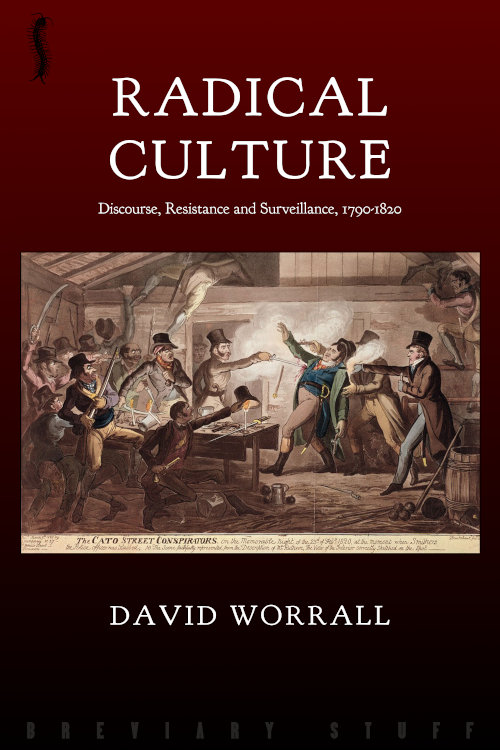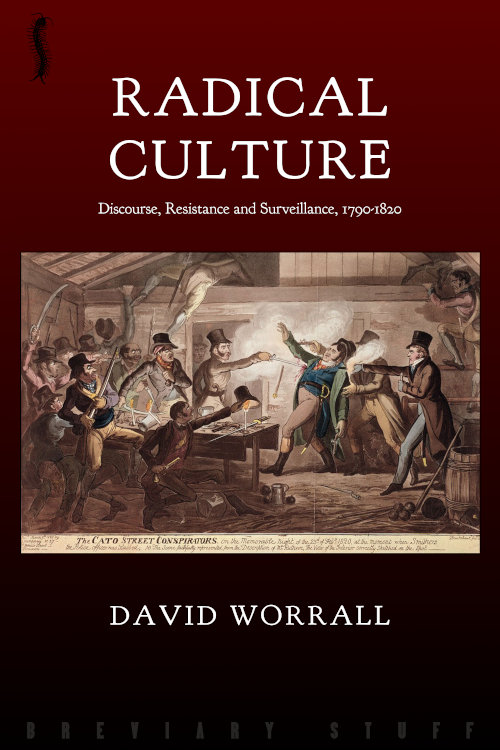- Preface
- Introduction
- 1. Sedition and Articulacy in the 1790s
- Thomas Spence's Arrest, 1792
'Mr. Reeve's Report on Sedition &c' [1794] and Spence's Pamphlets
The Panton Street Debating Club, 1795 - 2. Resistance and the Conditions of Discourse in the Early 1800s
- The 1800 London Bread Riots and William Blake
Spence's Sedition Trial, 1801
Colonel Despard's Treason Trial and Execution, 1802-3
William Blake's Indictment for Sedition, 1803 - 3. 'A Free and Easy Society to Overthrow the Government': Post-War Spenceans
- Two Spencean Activists: Thomas Preston and Allen Davenport
'Free and Easies'
- 4. Articulacy and Action
- The Spa Fields Rising, 1816
The Revolutionary Planning for Bartholomew Fair, 1817 - 5. Some Ultra-Radicals
- Robert Wedderburn, Man of Colour
E. J. Blandford, Revolutionary and Spencean Poet - 6. Hopkins Street to Cato Street: Surveillance and Resistance, 1819-20
- The 'Temple of Sedition' at Hopkins Street
Hopkins Street and Uktra-Radical Culture
The Cato Street Conspiracy as Ultra-Radical Culture - Conclusion
- Notes
- Bibliography
- Index
David Worrall – Radical Culture
Discourse, Resistance and Surveillance, 1790-1820
£15.00
England was a spy culture in the years 1790 through 1820. Restriction, regulation and surveillance formed the dominant discursive context. Ultra-radical artisans developed a discourse based on the revolutionary ideology of Thomas Spence which proposed the corporate ownership of land and the overthrow of the Government by physical force. The Spenceans were considered the most radical of the political groups active during this period, with William Blake, Jeremy Bentham, and Percy Shelley the best known of those spied upon for suspected Spencean activities.
This book outlines the battle between repressive seditious laws and the radicals whose weapon was the written and spoken word. David Worrall explores the discursive context of the campaigns against sedition in the 1790s, Colonel Despard’s intended coup of 1802, the Spa Fields rising of 1816, the planned Bartholomew Fair insurrection of 1817 and the debacle of the 1820 Cato Street conspiracy. He recovers a lost artisan culture recorded by spies, moles and informers who infiltrated the organizations, debating clubs and taverns where radical speakers called for violent revolution, examining for the first time the speeches, conversations, songs, poems, pamphlets, letters, handbills, trials, interrogations, and arrests which constituted the resistance to the Government’s regulation of discourse.
Radical Culture features a sympathetic portrait of these revolutionaries gleaned almost entirely from the records of the government spies who helped put them in jail. Worrall brings to life the ultra-radicals, dramatizing what they said, how they reacted under extreme conditions of arrest or impending execution, and how the Government hounded them in their last hours of life.
'Buy this book, read it, and get angry.' Steve Mills, Bristol Radical History Group





